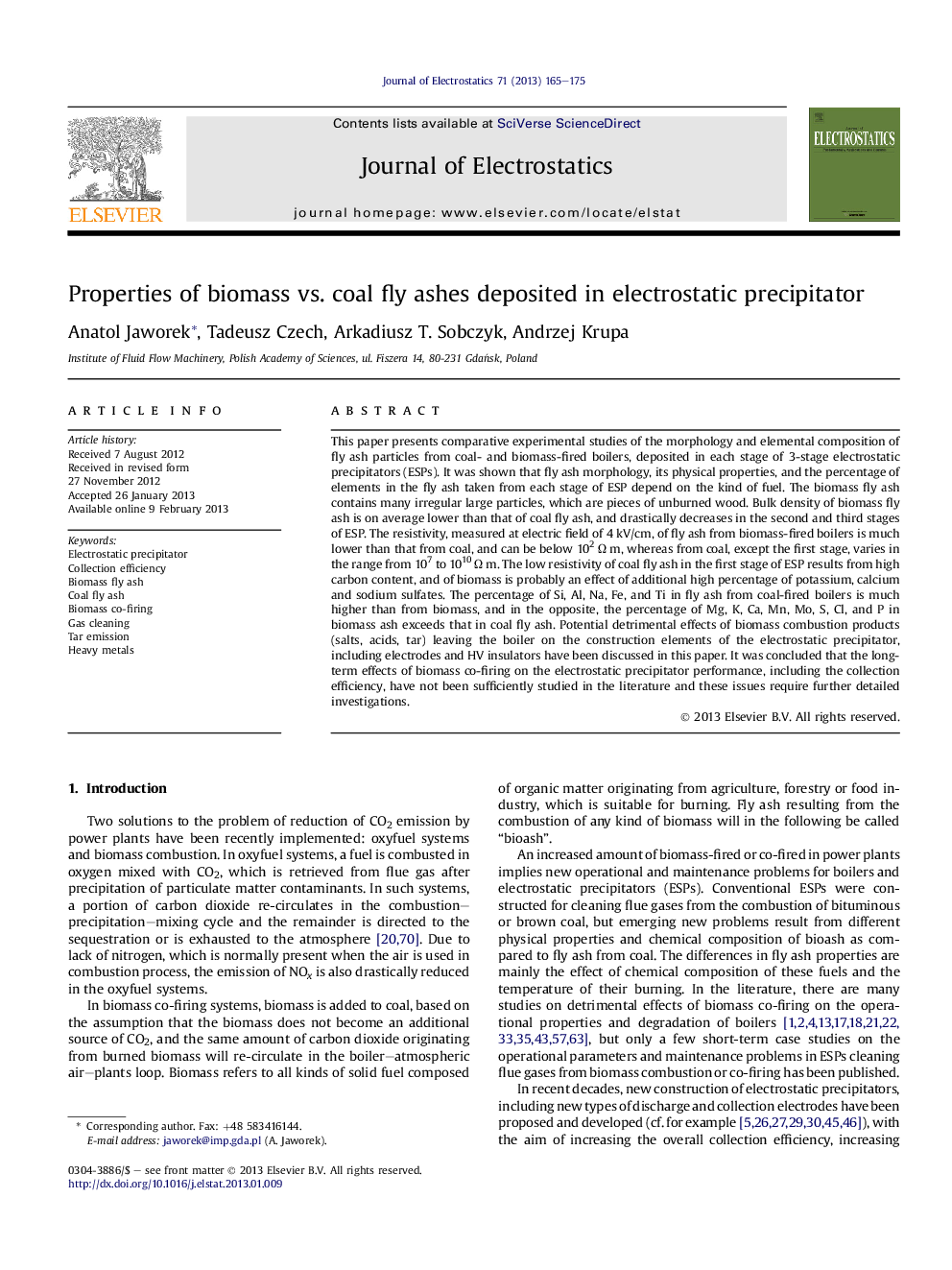| Article ID | Journal | Published Year | Pages | File Type |
|---|---|---|---|---|
| 726526 | Journal of Electrostatics | 2013 | 11 Pages |
This paper presents comparative experimental studies of the morphology and elemental composition of fly ash particles from coal- and biomass-fired boilers, deposited in each stage of 3-stage electrostatic precipitators (ESPs). It was shown that fly ash morphology, its physical properties, and the percentage of elements in the fly ash taken from each stage of ESP depend on the kind of fuel. The biomass fly ash contains many irregular large particles, which are pieces of unburned wood. Bulk density of biomass fly ash is on average lower than that of coal fly ash, and drastically decreases in the second and third stages of ESP. The resistivity, measured at electric field of 4 kV/cm, of fly ash from biomass-fired boilers is much lower than that from coal, and can be below 102 Ω m, whereas from coal, except the first stage, varies in the range from 107 to 1010 Ω m. The low resistivity of coal fly ash in the first stage of ESP results from high carbon content, and of biomass is probably an effect of additional high percentage of potassium, calcium and sodium sulfates. The percentage of Si, Al, Na, Fe, and Ti in fly ash from coal-fired boilers is much higher than from biomass, and in the opposite, the percentage of Mg, K, Ca, Mn, Mo, S, Cl, and P in biomass ash exceeds that in coal fly ash. Potential detrimental effects of biomass combustion products (salts, acids, tar) leaving the boiler on the construction elements of the electrostatic precipitator, including electrodes and HV insulators have been discussed in this paper. It was concluded that the long-term effects of biomass co-firing on the electrostatic precipitator performance, including the collection efficiency, have not been sufficiently studied in the literature and these issues require further detailed investigations.
► The physical properties of coal and biomass fly ash from each stage of ESP have been investigated. ► The elemental composition of coal and biomass fly ash from each stage of ESP has been compared. ► The physical properties and morphology of fly ash particles varies depending on the stage of ESP. ► Biomass fly ash morphology and elemental composition differs from the fly ash from bituminous coal.
